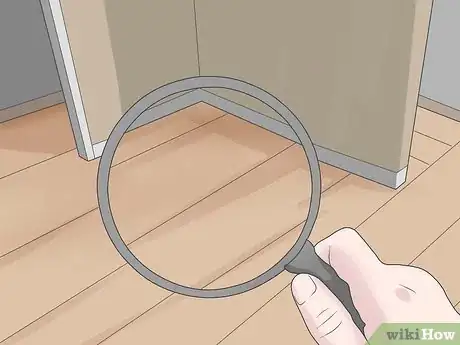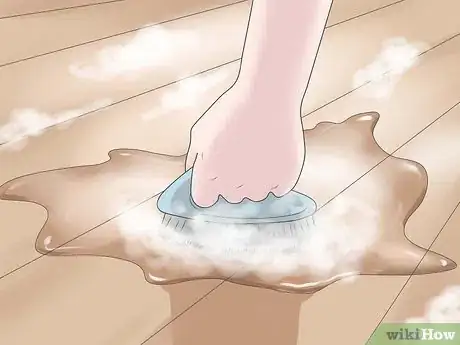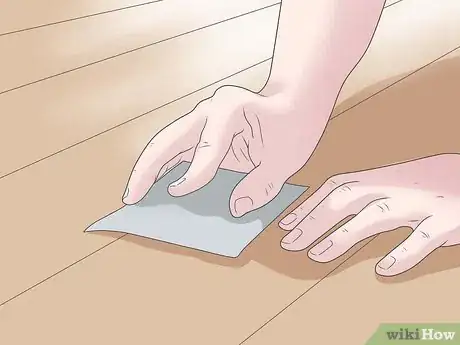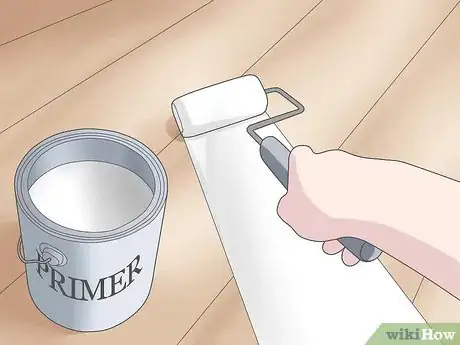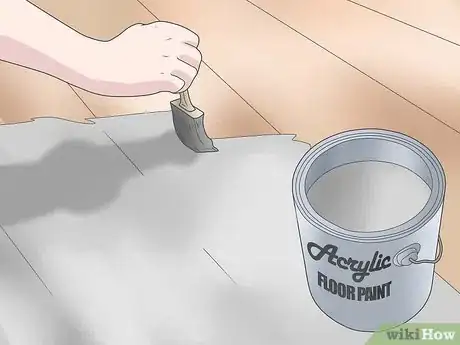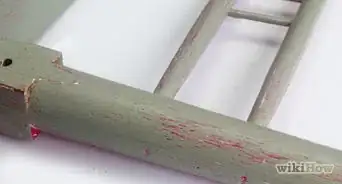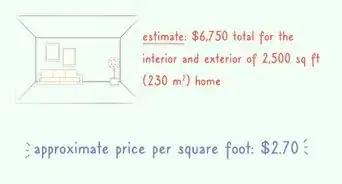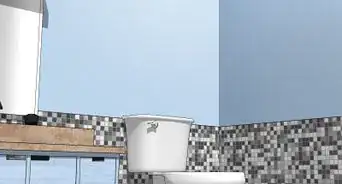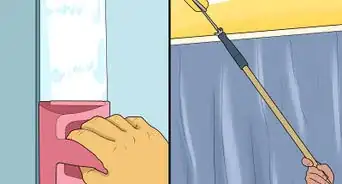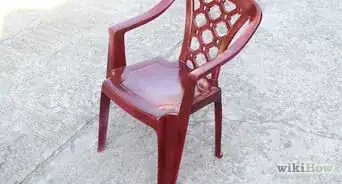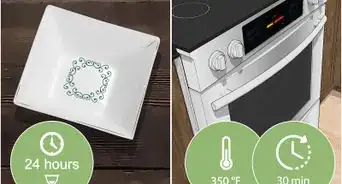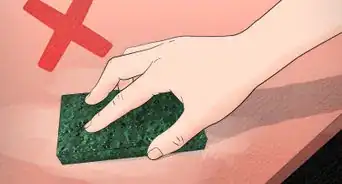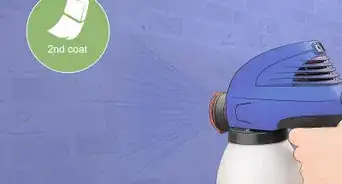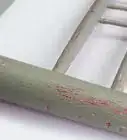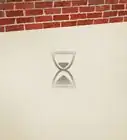wikiHow is a “wiki,” similar to Wikipedia, which means that many of our articles are co-written by multiple authors. To create this article, 9 people, some anonymous, worked to edit and improve it over time.
wikiHow marks an article as reader-approved once it receives enough positive feedback. In this case, 93% of readers who voted found the article helpful, earning it our reader-approved status.
This article has been viewed 107,949 times.
Learn more...
Painting floors can considerably change the visual aesthetic of a room, and is a relatively inexpensive way to give new life to dated flooring.[1] Because floors experience traffic and, as a result, suffer more wear and tear than other painted surfaces like walls, cabinets and furniture, it is important that you take certain measures to protect your paint job. When it comes to painting linoleum, the smooth surface makes for some difficulty in getting paint to stick to it and stay in place once dry. Moreover, kitchen floors require special considerations because they are exposed to moisture on a regular basis. Follow these directions to paint linoleum kitchen floors.
Steps
-
1Examine your floor to make sure it is good enough condition to paint. If you find surface cracks, make sure they aren't the type that chip off the surface; otherwise, this problem may continue after painting linoleum, ruining your paint job. Also, if your linoleum is extremely wavy, it is likely breaking down from the underside, in which case you may want to consider replacing the flooring.
-
2Clean the floors.
- Scrub the floors thoroughly with a scrub brush and a heavy-duty tri-phosphate (TSP) cleaner (found in your local home improvement or hardware store) in order to remove every last trace of grease and grime. This is especially important for ensuring paint adheres to linoleum kitchen floors.
- If you find that the surface of the linoleum is still glossy, use a degreaser or a wax stripper to remove the final layer of protective wax.
- Rinse the floor until it is cleared of any cleaner residue and allow it to dry completely.
Advertisement -
3Sand the floors. Use a light to medium grit sandpaper to scour the surface of the floors before painting linoleum, being sure to cover every part of the floor, even in edges and corners. This removes any remaining traces of wax that you may not be able to see and roughs up the surface enough to grip the paint.
-
4Apply a primer.
- Choose a primer that is formulated especially for floors, and use a roller and brushes as necessary to complete the application.
- Apply as many coats as it takes to produce a smooth surface for painting linoleum.
- Allow the primer to dry according to the manufacturer's instructions, which may be a period of several days.[2]
-
5Paint the floors. Use a roller for the broad surfaces and brushes for cutting in at the edges and corners. For linoleum kitchen floors, you should use either an acrylic floor paint or an epoxy coating.
Community Q&A
-
QuestionIs it safe to paint a textured linoleum floor?
 Community AnswerYes, it is.
Community AnswerYes, it is. -
QuestionCan I use this on my linoleum counter tops?
 Community AnswerThere is now a counter top paint made by Rustoleum. It is made especially for counter tops and doesn't require a clear coating over it.
Community AnswerThere is now a counter top paint made by Rustoleum. It is made especially for counter tops and doesn't require a clear coating over it.
Warnings
- Even if the floor feels dry, it's important to allow it to fully cure before moving any heavy furniture back into its place. A good rule of thumb is to allow linoleum kitchen floors a week to set, as kitchen appliances are very heavy and can ruin a floor that is not fully cured.⧼thumbs_response⧽
Things You'll Need
- TSP cleaner
- Fine to medium grit sandpaper
- Paint rollers
- Paint brushes
- Primer for floors
- Acrylic floor paint or epoxy coating
